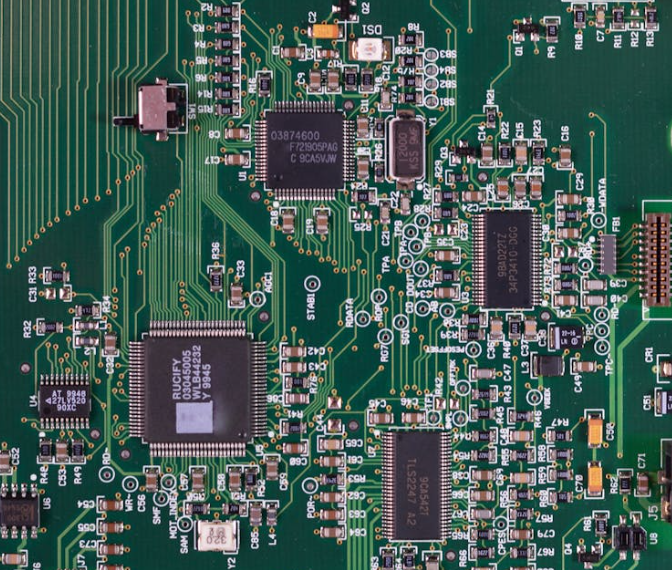In today’s fast-paced digital world, the environmental impact of technology has become a major concern. As industries and individuals adopt more digital solutions, the carbon footprint associated with computing and electronic devices is growing. However, thanks to innovations in green computing and energy-efficient devices, the tech industry is finding ways to reduce its environmental impact while maintaining performance and efficiency.
What is Green Computing?
Green computing, also known as sustainable computing, refers to the practice of designing, developing, and using computer systems and devices in an environmentally friendly manner. This includes reducing energy consumption, improving efficiency, and minimizing electronic waste. Green computing technologies aim to optimize resource usage and ensure that technology works in harmony with the environment.
With growing awareness of climate change and the environmental effects of excessive energy consumption, green computing is becoming a critical area of focus for both businesses and consumers. As a result, energy-efficient devices are emerging as key players in this movement.
Innovations Driving Green Computing
- Low-Power Chips
One of the biggest contributors to energy consumption in computing devices is the power required by processors. Recent innovations in semiconductor design have led to the creation of low-power chips, significantly reducing the energy needed for operations. For instance, ARM-based processors, known for their power efficiency, are increasingly being adopted in smartphones, tablets, and laptops, making devices more energy-efficient without compromising performance.
- Energy-Efficient Data Centers
Data centers, which power everything from cloud computing to streaming services, are known for their massive energy consumption. Innovations in green computing have led to the development of energy-efficient data centers that reduce power use while optimizing cooling systems. These advancements include liquid cooling technologies, which use liquids instead of air to cool servers, as well as AI-powered optimization tools that monitor and manage energy consumption in real time.
- Solar-Powered Devices
Solar energy is a renewable resource, and its integration into computing devices is helping reduce dependency on traditional power grids. Solar-powered laptops, smartphones, and even servers are becoming more common, allowing users to operate their devices in an environmentally conscious way. For instance, solar-powered chargers are now widely available, providing an eco-friendly alternative for powering devices on the go.
- Solid-State Drives (SSDs)
Traditional hard disk drives (HDDs) have been a significant source of energy consumption due to their moving parts. Solid-state drives (SSDs), on the other hand, are more energy-efficient and consume less power. SSDs are faster, more durable, and require less energy for the same performance, making them an ideal choice for both personal and enterprise-level computing needs.
- Energy-Efficient Displays
Display technology has come a long way in terms of energy efficiency. OLED (Organic Light-Emitting Diode) and microLED screens consume less power compared to traditional LED or LCD displays, which is an important step in green computing. These energy-efficient displays not only reduce power consumption but also improve the quality of visuals with better color accuracy and brightness.
The Future of Green Computing and Energy-Efficient Devices
As environmental concerns continue to rise, the future of green computing looks promising. We can expect further innovations in sustainable technology, such as the development of recyclable electronic components, better battery management systems, and the integration of renewable energy sources into everyday devices. Additionally, the rise of artificial intelligence (AI) and machine learning (ML) will likely accelerate the development of energy-efficient systems by optimizing operations and resource usage.
Conclusion
Innovations in green computing and energy-efficient devices are transforming the tech landscape, helping to reduce the environmental impact of our digital world. From low-power processors and energy-efficient data centers to solar-powered devices and sustainable display technology, these advancements are contributing to a more sustainable future. As the demand for eco-friendly technology continues to grow, businesses and consumers alike can benefit from adopting these innovations, ensuring that technology continues to evolve in an environmentally responsible way.
By embracing green computing, we can reduce our carbon footprint and ensure that the technology of tomorrow is more energy-efficient and sustainable than ever before.

 Accounting1 week ago
Accounting1 week ago
 Economics1 week ago
Economics1 week ago
 Personal Finance1 week ago
Personal Finance1 week ago
 Accounting1 week ago
Accounting1 week ago
 Finance7 days ago
Finance7 days ago
 Economics1 week ago
Economics1 week ago
 Economics1 week ago
Economics1 week ago
 Economics1 week ago
Economics1 week ago





















